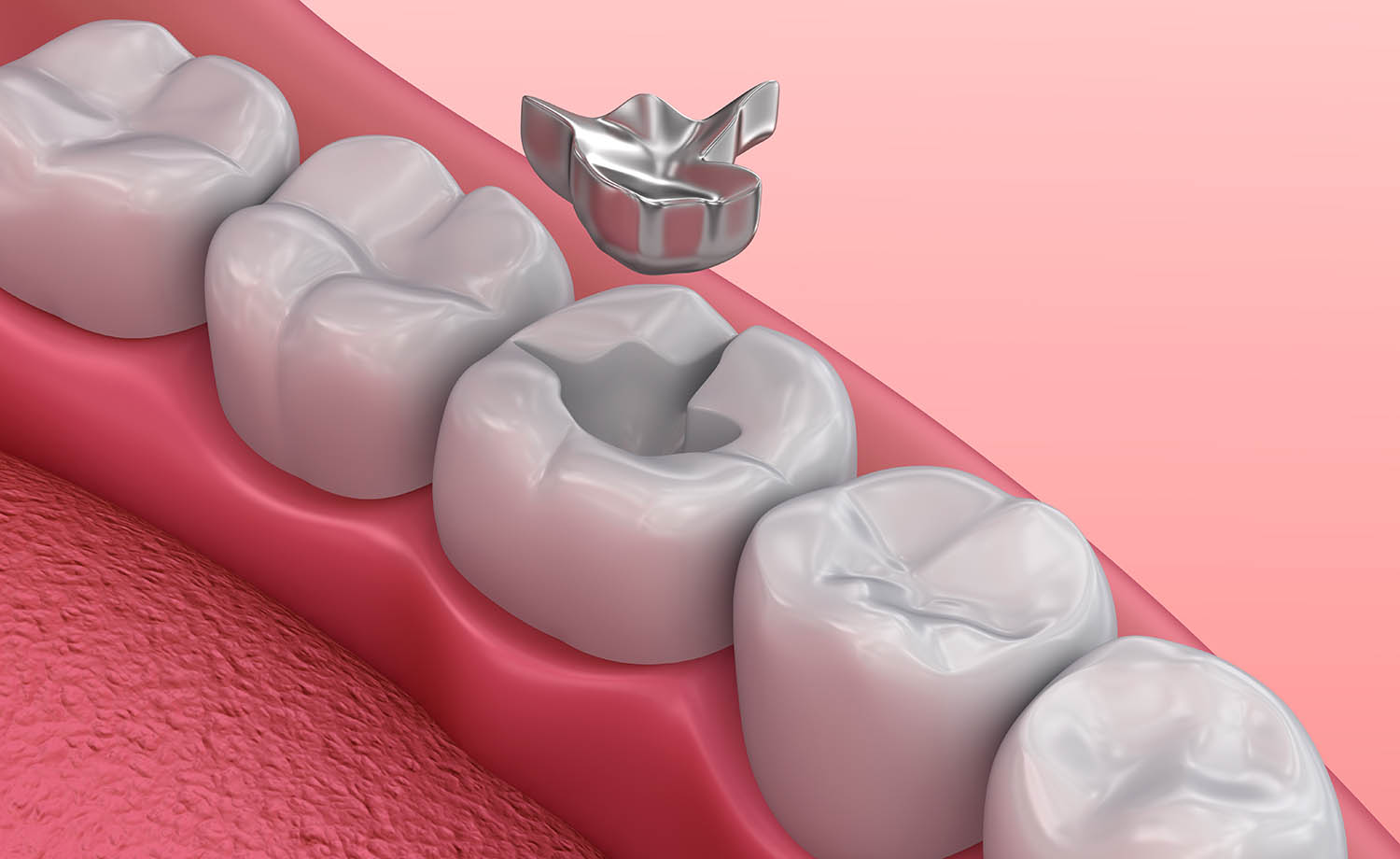Dental extraction is a common procedure performed to remove damaged, decayed, or problematic teeth. While dentists prioritize saving natural teeth, extraction becomes necessary in cases of severe infection, crowding, or impacted wisdom teeth. Dental extraction is a common procedure in dentistry, performed when a tooth is severely damaged, decayed, or causing other oral health issues. While preserving natural teeth is always a priority, extraction becomes necessary when the tooth cannot be saved through treatments like fillings, crowns, or root canals. When is a Dental Extraction Needed?There are several reasons why a tooth may need to be extracted:✔ Severe Decay or Infection – When a cavity or infection reaches deep into the tooth and affects the surrounding bone.✔ Impacted Wisdom Teeth – Wisdom teeth often grow in misaligned or fail to emerge properly, leading to pain and infections.✔ Crowding Issues – In orthodontic treatments, extractions may be needed to create space for proper teeth alignment.✔ Gum Disease – Severe periodontal disease can weaken tooth support, making extractions necessary.✔ Tooth Fractures – If a tooth is broken beyond repair, extraction might be the best option. The Extraction ProcedureThe process begins with a thorough examination, often including X-rays, to assess the tooth’s condition and surrounding structures. The extraction itself is performed under local anesthesia to ensure a pain-free experience. There are two main types:🦷 Simple Extraction – Performed on visible teeth using forceps.🦷 Surgical Extraction – Needed for impacted or broken teeth, requiring a small incision in the gum. Post-Extraction CareProper aftercare is essential for smooth healing:✅ Bite on gauze to control bleeding.✅ Avoid hard, spicy, or hot foods for the first few days.✅ Apply an ice pack to reduce swelling.✅ Avoid smoking or using straws, as they can disrupt healing.✅ Maintain gentle oral hygiene but avoid brushing directly over the extraction site. Tooth Replacement OptionsOnce the extraction site has healed, dentists may recommend dental implants, bridges, or dentures to restore functionality and aesthetics. Dental extractions are safe and routine procedures, ensuring better oral health in the long run. If you’re experiencing persistent tooth pain or discomfort, consulting a dentist can help determine the best course of action.
Dental caps and bridges
Dental caps and bridges play a crucial role in restoring smiles and maintaining oral functionality.
cosmetic dentistry?
Cosmetic dentistry services can: Enhance your smile Brighten dull, stained teeth Improve the shape of your teeth Conceal chips and cracks Bring balance and symmetry to your smile Boost your confidence
Why Wisdom Teeth Removal is Required ?
Wisdom teeth, also known as third molars, are the last set of teeth to emerge, usually between ages 17 to 25. While some people have enough space in their jaw for these teeth to grow properly, many experience problems that require removal. Wisdom teeth, also known as third molars, are the last set of teeth to emerge, usually between ages 17 to 25. While some people have enough space in their jaw for these teeth to grow properly, many experience problems that require removal. Reasons for Wisdom Teeth Removal 1. Impacted Wisdom Teeth The most common reason for extraction. When the tooth does not fully emerge due to lack of space, it remains trapped (impacted) under the gum or in the jawbone. Types of impactions: Soft tissue impaction: The tooth is covered by gum tissue. Partial bony impaction: Part of the tooth is visible, but the rest is stuck in the jawbone. Complete bony impaction: The tooth is entirely buried in the jawbone. 2. Pain and Discomfort Impacted or improperly erupted wisdom teeth can cause persistent pain in the jaw, ear, or head. The pain may worsen when chewing or opening the mouth. 3. Crowding of Other Teeth Wisdom teeth can push against other teeth, causing misalignment or crowding. This is especially concerning for people who have undergone braces or Invisalign, as it can undo orthodontic work. . 5. Tooth Decay (Cavities) Wisdom teeth are located far back in the mouth, making them hard to clean properly. This increases the risk of plaque buildup, cavities, and gum infections. 6. Cysts and Tumors In rare cases, impacted wisdom teeth can lead to cysts (fluid-filled sacs) or tumors in the jawbone. These can damage adjacent teeth, nerves, and bone, requiring surgery. 7. Sinus Issues Upper wisdom teeth are close to the sinus cavities. When they grow in, they may put pressure on sinuses, causing pain, congestion, and sinus infections. Wisdom Teeth Removal Process at a Dental Clinic 1. Consultation and X-Ray The dentist takes an X-ray or 3D scan to check the position of the wisdom teeth. Based on the evaluation, they decide whether removal is necessary. 2. Anesthesia Local anesthesia: Numbs the area (patient remains awake). Sedation anesthesia: Patient is relaxed but semi-conscious. General anesthesia: Used for complex cases (patient is fully asleep). 3. Tooth Extraction Simple Extraction: If the tooth is fully erupted, it is removed like a regular tooth. Surgical Extraction: If the tooth is impacted, the dentist makes an incision in the gum, removes bone, and extracts the tooth in pieces. 4. Stitches & Recovery The area is stitched if needed, and gauze is placed to stop bleeding. Recovery takes a few days to a week, with swelling and mild discomfort .
How is a smile makeover done?
Each individual’s smile makeover will differ, depending on their dental health and requirements. Each individual’s smile makeover will differ, depending on their dental health and requirements. To provide an idea of the typical procedures involved, here are the most common ones. Clear aligners Clear aligners are a set of custom-fitted aligners that fit over your teeth, and aligner sets are changed on a weekly basis. They are a corrective procedure that lets your doctor control exactly how your teeth will be realigned. Because the aligners are nearly invisible, people won’t be able to tell you are undergoing treatment. Clear aligners give a natural appearance to patients and can be easily taken out for brushing and flossing. You also don’t have to worry about avoiding any food with clear aligners. Beauty White The Beauty White programme is a gentle whitening process that allows patients to whiten their teeth in the comfort and convenience of home. Patients wear a customised tray containing the whitening gel over their teeth between thirty minutes and four hours per day for two to six weeks, depending on the strength of the gel and the desired results. Pageant White Our Pageant White process is designed to give the beauty queen, the bride, and the special someone a gorgeous smile that brilliantly sparkles and shines. Pageant White is our most intense program, which aims to maximise whitening potential using at-home whitening that is both jump-started and finalised with office sessions.
Dental Veneer
A dental veneer is a layer of tooth-coloured material which is attached to and covers the surface of a tooth. To fit a veneer, the tooth will need a very small amount of enamel removed from its surface. This is usually completely pain free. A digital scan (yes, no more of the old-fashioned, uncomfortable moulds are taken) will be made of the tooth. The dentist will also record the colour that the new veneer will need to be to match the neighbouring teeth. This information will be sent to a dental laboratory who will make the veneer. Until the veneer has been made the tooth may be more sensitive to hot and cold. A temporary veneer is usually necessary. Veneers are used in a variety of situations:When there is tooth discoloration that cannot be cleaned awayWhen there is an abnormal structure or texture, including chipping, fractures, or wear (erosion) of the tooth To aid closure of spaces between the front teethTo create the illusion of straight teeth with the desired colour and shape when the front teeth are slightly crowdedTo camouflage front teeth that have multiple, shallow and unsightly fillingsThere are no strong reasons against veneering a tooth. However, certain factors increase their risk of failure, such as grinding of teeth, excessively worn teeth, very large fillings, unfavourable bite (occlusion), vomiting associated with bulimia and chronic alcoholism and acid regurgitation as in hiatus hernia. They may also be unsuitable if the teeth are very discoloured.
Dental Amalgam: For Tooth Restoration
Dental amalgam has been a trusted material for filling cavities for over a century. Lorem ipsum dolor sit amet, consectetur adipiscing elit. Ut elit tellus, luctus nec ullamcorper mattis, pulvinar dapibus leo. Composed of a mixture of metals, including silver, tin, copper, and mercury, amalgam is known for its durability and strength. It is particularly effective for restoring teeth in areas that endure heavy chewing pressure, such as molars. Its affordability and long-lasting nature make it a popular choice for patients seeking a cost-effective solution for tooth decay. The Brownfield dentist in Brownfield is conveniently located near to the Brownfield Sport Complex and Coleman Park is the best option available for any type of Dental amalgam . Despite its proven track record, dental amalgam has faced some controversy due to its mercury content. However, numerous studies and health organizations, including the FDA and WHO, have confirmed that amalgam fillings are safe for most patients. The mercury in amalgam is chemically bound, making it stable and unlikely to release harmful vapors under normal conditions. For patients with specific health concerns, alternative materials like composite resin or ceramic fillings are available. At our Dental Clinic , we prioritize your oral health and comfort. During your consultation, our experienced dentists will discuss the best filling options tailored to your needs, including the pros and cons of dental amalgam. Whether you choose amalgam or another material, our goal is to provide you with a durable, functional, and aesthetically pleasing solution to restore your smile. Schedule an appointment today to learn more about your dental restoration options!
Dental Implants
Having difficulty chewing because of a missing tooth? Dental implants permanently fill up gaps due to lost teeth. They also protect the other teeth and reduce bone. They are durable and are made to look and feel just like your natural teeth. Once completed, you might even forget they are replacements. Dental implants mimic natural teeth and are surgically anchored into place on top of the jawbone. As a permanent fixture in your mouth, they cannot be taken out at night, unlike dentures, which will need to be removed before bed time. Bone grafting may be required if there is bone loss or low bone density in the jaw. Having a bone graft can help to stimulate bone growth and prepare the jaw bone for dental implants. How are dental implants placed in the mouth? Dental implants are surgically placed beneath the gum line, at the top of your jaw bone. Your dental surgeon will start the dental implant procedure with anesthesia to numb the surgery site before making a small incision into the gum line. A tooth socket for the implant is created by drilling into the bone. The oral surgeon then inserts titanium screws that act as anchors for holding dental crowns or bridges once the site is healed after a few months. A tooth-shaped cap called an abutment is screwed onto the titanium screw. Once the implant is in place, your dentist will place some sutures to close the gums. What should I expect during the dental implant procedure? The whole process takes about 6 months to a year on average. Our dentist will assess your overall health and ability to accept the implant before starting the treatment plan. In some cases, a bone or gum graft may also be done on the site of the implant to ensure there is enough support before inserting the implant. Once the implant is placed in the bone, it is left to heal for about 4 to 6 more months. A crown will then be created, installed, and you will be ready to show off your brand new tooth. What are the benefits of dental implants? Dental implants are a more permanent solution to lost teeth than dentures, and can help to anchor partial dentures to your mouth. They are also more comfortable to chew and speak with than dentures, because they usually feel just like natural teeth. You can also expect to improve your ability to chew and speak after a successful dental implant. Are dental implant treatments painful? You should not feel any pain during dental implant procedures due to the anesthesia.
Our Dental Emergency Clinics
At our Dental office , we understand that dental emergencies can be distressing and require immediate attention. After a long day at work, you suddenly begin to experience a severe toothache. You are searching for a nearby dentist in Texas, but all of them are closed. At this hour? How are you going to find a solution for your tooth pain without treatment from a reputable dental clinic ? Tired of searching for “24 hour dental clinic near me?”Luckily, Our emergency dentists are seasoned, professional and dependable.At our Dental office , we understand that dental emergencies can be distressing and require immediate attention. Common Dental Emergencies Dental emergencies can strike unexpectedly, causing immense discomfort and potential risks if not addressed promptly. Some common dental emergencies include severe toothaches, broken teeth, knocked-out teeth, abscesses, and oral infections. Delaying treatment for these emergencies can lead to further complications, jeopardising your oral health. If you experience any of these emergencies, it is crucial to seek immediate dental care in Singapore to prevent worsening conditions and alleviate your pain effectively. Understanding Toothache Emergencies Toothaches are often indicators of underlying dental issues, such as tooth decay, dental infections, cracked teeth, or gum disease. Severe or persistent toothaches may be signs of a dental emergency that requires urgent attention.
What is a phobia?
Dentophobia is a type of specific phobia disorder. A specific situation (going to the dentist) leads to a fearful response. What is a phobia? Phobias are a kind of anxiety disorder. They lead to excessive fear of an event or situation that isn’t actually harmful. Dentophobia is a type of specific phobia disorder. A specific situation (going to the dentist) leads to a fearful response. Dentophobia is an extreme fear that’s out of proportion to the situation. People with dentophobia avoid seeing the dentist even when they’re in pain. This condition is so severe that it can lead to very poor dental health. These problems may affect a person’s relationships or job prospects, too. Severe fear of dental treatment involves feelings of distress, but these feelings aren’t as extreme as dentophobia. People with dental anxiety worry a lot about pain or stress at the dentist, but will likely still see their dentist for treatment, unlike those with dentophobia. What does a person with dentophobia fear? Anesthetic: People usually aren’t fearful of getting an anesthetic (numbing drug), but instead, fear the anesthetic not working. Some people fear side effects of the anesthetic, such as temporary numbness of their lips. Blood: Some people have a fear of blood (hemophobia). They may feel afraid or panicky about the possibility or actual presence of even minor bleeding that can happen during a dental procedure. Choking: People may fear gagging or choking when the dentist numbs their mouth. They may fear not being able to breathe or swallow. The dentist: People may associate negative feelings with their dentist. These feelings may be worse if they’ve had a bad experience with a dentist in the past. Feeling pain: Dental procedures fairly often involve a small amount of pain. And sometimes, the procedure or recovery does hurt. People who’re highly sensitive to pain may be more fearful of feeling discomfort during their dental treatment or as a result of it. Needles: People afraid of needles may fear the injections dentists use during dental procedures. Noise: Someone may fear the noise made by drills and dental instruments used by the dentist or dental hygienist. Smells: People may become anxious due to how the dentist’s office smells or the specific aromas that arise during dental treatment. How can I find out if my child has dental phobia? A constant fear of the dentist can be extremely upsetting for your child. If your child is very young, it may be difficult for them to verbalize what’s wrong. If severe fear of the dentist greatly impacts your child’s life, your child’s healthcare provider or dentist may recommend they visit a mental health professional. This healthcare provider can look at your child’s symptoms, offer a diagnosis and help you form a treatment plan.









